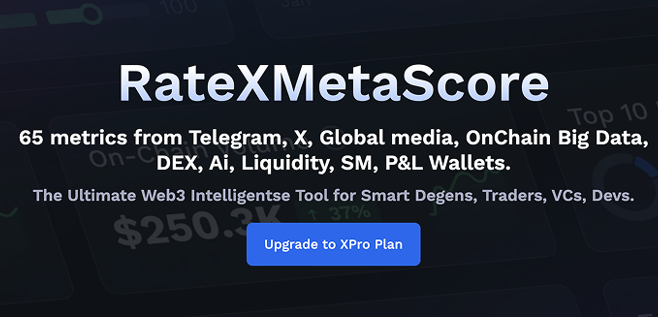Published 08 May 2025
Escaping the Market Cap Trap: What Actually Works

In crypto, many still rely on a simple idea: build indexes based only on market cap. It seems logical — the biggest tokens should lead, right? But in Web3, that logic breaks fast. This approach causes major distortions, poor representation, and high costs when managing portfolios.
At RateXAI, we took a smarter route. We’ve already built a universal index, available when you upgrade to the XPro Plan.

Why Market Cap Alone Doesn’t Work
Market cap ≠ liquidity
In traditional markets, big usually means liquid. Not in crypto. A token can have a high market cap because of a small float — and still be barely tradeable. That leads to slippage, poor execution, and major issues with index tracking.
Indexes without liquidity fall apart in practice
Without factoring in volume and order book depth, an index fills up with tokens that you can’t realistically buy or sell. Even in a “Top 10 by market cap”, assets with weak liquidity sneak in — adding up to 28 different tokens over 10 years in similar models. Some were barely tradable, like NEO or XMR. This results in constant rebalancing, high costs, and massive tracking errors.
The Shifting Structure of the Crypto Market
Crypto market segments have changed drastically over the last decade. Understanding this evolution is key to building indexes that work.
-
BTC has been the only consistently stable asset in the large-cap segment for over 10 years. It now acts as a safe haven — with lower volatility and stronger performance during market stress.
-
ETH stayed close to BTC for years, but in times of weak performance, it rapidly loses index weight. In April 2025, it even underperformed every major benchmark, dropping ~8%.
-
Mid-cap tokens only started forming meaningfully in 2018. But this segment remains thin, unstable, and highly reactive.
-
Small-cap assets used to dominate in number — but after the collapse of centralized exchanges like FTX, this segment has shrunk dramatically and become more volatile than ever.
Static indexes can’t keep up with these dynamics. They’re built for a market that no longer exists.
How RateXAI Fixes It
We created RateXMetaScore — a next-gen index powered by 65 metrics. It doesn’t rely on a single data point. It blends data from Telegram, X, global media, on-chain analytics, DEX activity, smart wallets, P&L tracking, and more.
Our scoring system includes:
-
Liquidity (volume, depth, spreads across DEXes)
-
Real-time sentiment and social activity
-
Behavior of smart wallets and profitable traders
-
On-chain flow, volatility, and market responsiveness
-
Combined risk-adjusted scoring for active tracking
That gives a living, multidimensional, and trustworthy signal — not just a number.
Takeaways
-
Indexes that ignore liquidity create a false sense of diversification — and expose you to hidden risks like slippage and high rebalancing costs.
-
The “top market cap” model is outdated. Over time, it includes too many low-liquidity tokens that distort performance.
-
BTC remains the most stable large-cap performer. Mid- and small-cap assets are volatile, unstable, and sensitive to structural changes.
-
ETH’s recent underperformance shows that even top assets are vulnerable to market shifts.
-
Smart indexing requires more than size — it demands layered data and context-aware scoring.
RateXMetaScore is built for this new reality. It helps traders, DeFi builders, DAO strategists, and analysts track what actually matters.
Upgrade to the XPro Plan to see how smart indexing actually works.
Read More




 Get RateX Pro
Get RateX Pro

 14 May 2024
14 May 2024
